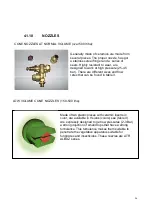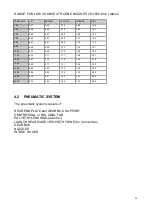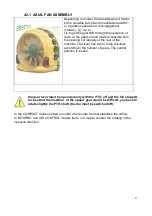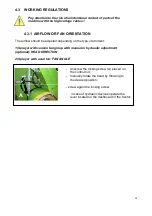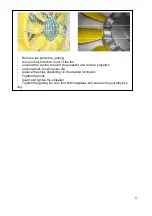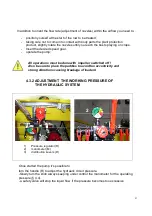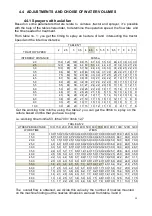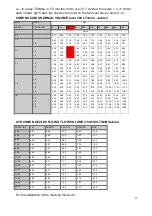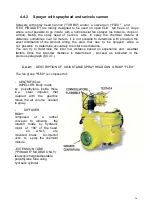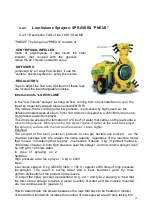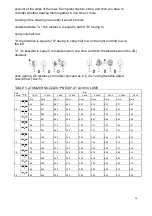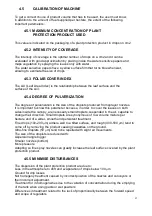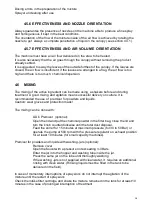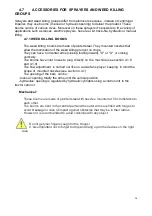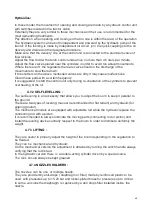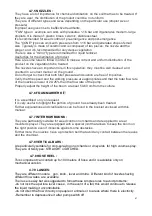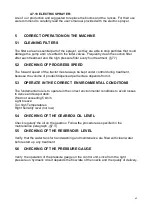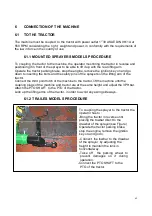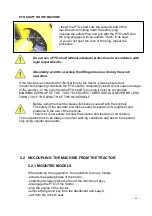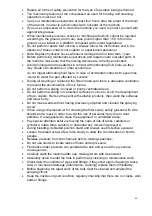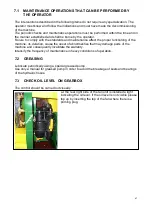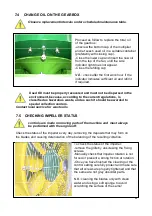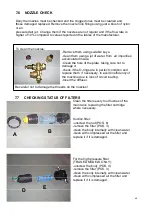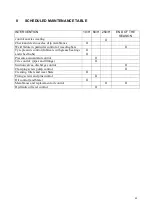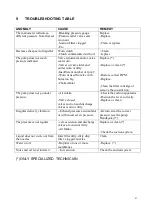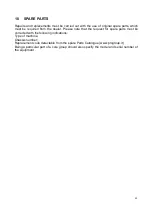
37
4.5
CALIBRATION OF MACHINE
To get a correct choice of product volume that has to be used, the user must know,
in addition to the amount of fuel supplied per hectare, the extent of the following
important parameters:
4.5.1 MAXIMUM CONCENTRATION OF PLANT
PROTECTION PRODUCT USED
This value is indicated on the packaging of a plant protection product in drops on cm2
4.5.2 INTENSITY OF COVERAGE
The intensity of coverage is the optimal number of drops on a cm2 and it can be
evaluated with good approximation by placing inside the water sensitive papers and
maps vegetation by spraying the leaves only with water .
The water sensitive papers have a yellow surface film that turns blue when wet,
allowing to estimate the size of drops
4.5.3 FOLIAR COVER INDEX
The LAI (Leaf Area Index) is the relationship between the leaf surface and the
surface of the soil.
4.5.4 DEGREE OF PULVERIZATION
The degree of pulverization is the size of the droplets produced from sprayer nozzles.
It is important to know this parameter because, in order to cover the leaves on both
sides inside the canopy ,are necessary small droplets ,suspended in the air, capable to
change their direction. Small droplets are synonymous of low volume mixture per
hectare and of a wider, smooth and persistent treatment.
Fine drops (100-200
µ
m) adhere well to a tilted surface, and rough (400-500
µ
m) tend to
come off by removing the product causing casualties on the ground.
Ultra-fine droplets (50
µ
m) tend to be repelled with slight air movements.
The size of the droplets is reduced with:
Aspersion angle bigger
Smaller nozzles (bottom)
More pressure
Adopting so fine spray nozzles can greatly increase the leaf surface covered by the plant
protection product.
4.5.5 MINIMISE DISTURBANCES
The dispersion of the plant protection product are due to:
Loss in the atmosphere to drift and evaporation of drops below 100
µ
m
Ground for drip losses
Not homogeny treatment caused by incorrect position of the nozzles and conveyors or
their incorrect adjustment.
Treatment for in homogeneities due to the variation of concentration during the emptying
of the tank when using paste or wet powders
Differences in treatment related to the lack of proportionality between the forward speed
and scope of regulators


